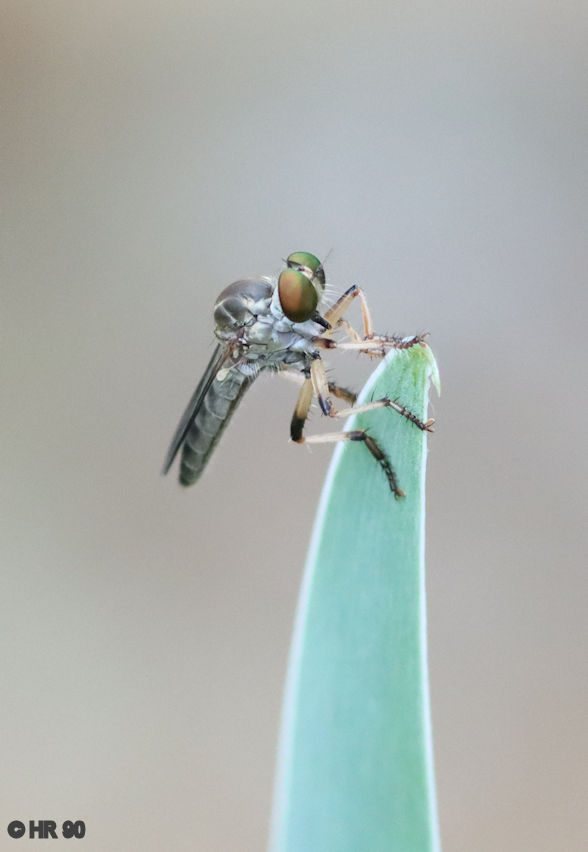|
Shot from Camp Robinson where these were a county record. I believe they were also O. ouachitensis. They were larger than the individuals from western Arkansas. This is a male. And he was remarkably cooperative. These guys love to perch at the highest stem tops. Apparently downed trees are optimum. Females appear to be happy with lower grassy perches. On grass perches they swing out at about 45 degrees. At high perches they characteristically take this pose. |
|
|
|
Shot from Lorance natural area where this one appeared more robust than the above and was near the swamp area. Legs are marked slightly differently from the above but still with the same overall appearance. I'm not sure why some of the eyes appear red reflective and some green. This likely cannot be seen in specimens. |
 |
| This female on my Iris blade in spring of 2020. Almost certainly O. ouachitensis as most of my yard species are. |
|
|
|
Almost yellow-orange on the sides of the abdomen and fully yellow-legged, I believe this is Ommatius gemma from Bob Barber's home county. Also appears less elongate than O. ouachitensis. Ommatius gemma can be told in hand by two large marginal bristles on the scutellum. Also the legs are generally orange and reddish including all three femora whereas ouachitensis and oklahomensis are black and orange (see above). None of the other North American species have the marginal bristles. It would be difficult to see them in this shot. O. tibialis has more dark marking on the legs but less than O. ouachitensis. |
|
|
|
Ommatius gemma from Norm showing the scutellar bristles visible against the green background. |
|
|
|
Also looked very much like O. gemma. Very small. I thought it was a male and then collected it and found it was female. This will require a scope to tell the species. Much less black in the legs than in O. ouachitensis though. |
|
|
|
This is O. gemma. A male and also very small. You can actually see the genitalia from this angle which shows the dual hooks, right and left, of the gemma male. |
|
|
|
This is O. wilcoxi. A female from the east coast where this species resides. Supposedly ranges into TX but we have no records yet from Arkansas. The slightly smoky wings and the all orange-red legs both femoral and tibial is diagnostic for this species. |
|
|
|
This Ommatius is from May in Craighead county. And Norm is convinced it is an unknown species. It certainly does not look like our summer O. ouachitensis and it is definitely not gemma. We no longer believe in the fabled O. oklahomensis. The direct male genital comparison for ouachitensis is just slightly off. |